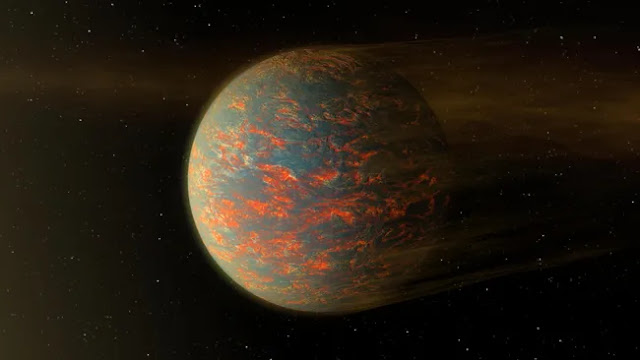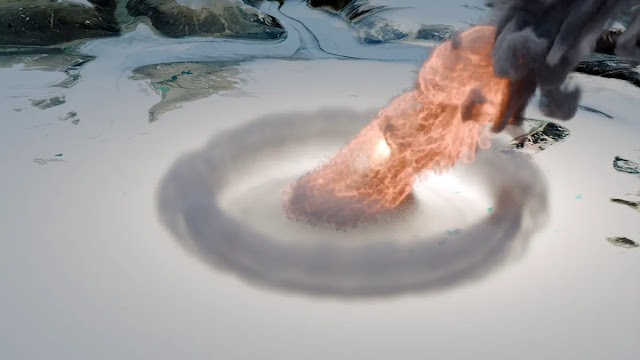After over two decades, the first super-Earth astronomers ever found have emitted peculiar signals, and scientists may finally know why.
According to a new study, volcanoes on this terrible planet regularly erupt and spout hot gas that forms an atmosphere, only for the atmosphere to burn out and leave the planet bald again. James Webb Space Telescope (JWST) training on the peculiar exoplanet will be necessary to test that notion.
55 Cancri e is a rocky planet discovered in 2004 about 40 light-years from Earth. It is roughly eight times as large as our planet.
At less than 2% of Earth’s distance from the sun, the planet is so close to its parent star that it completes a circle in just 17 hours. This creates some really peculiar and unexplainable situations on the planet.
As noted in a September publication approved by the Astrophysical Journal Letters, the planet’s transit signal may be the most perplexing feature. When 55 Cancri e passes in front of its parent star, creating a minor eclipse, this is the light that can be seen from Earth. It is also the light that is visible when the planet passes behind its star.
There are occasions when 55 Cancri e goes behind its star and releases no visible light at all, and other times the planet produces a strong visible light signal. There is always a signal in infrared light, however, it varies in strength.
The Spitzer Space Telescope’s observations of that infrared light revealed that the planet’s day side endured extraordinarily high temperatures—well over 4,400 degrees Fahrenheit (2,427 degrees Celsius)—while the night side saw somewhat lower but still extremely hot temperatures—roughly 2,060 degrees Fahrenheit (1127 degrees Celsius).
According to their theory in the new study, the planet is outgassing—that is, releasing hot, carbon-rich components into the atmosphere—due to its closeness to its star. Outgassing occurs when massive volcanoes and thermal vents spring up. However, the intense heat makes it impossible for the planet to hold onto that atmosphere for very long, and eventually, the gas is blown away, leaving the planet bare until the outgassing starts again.
The atmosphere of the planet 55 Cancrie is unstable, in contrast to most worlds. The star’s intense radiation and solar wind drive away the atmosphere, despite the outgassing process’s best efforts to thicken it. However, because these two processes are out of balance, the planet occasionally has an atmosphere and occasionally does not.
The anomalous transit signals, according to the researchers, can be explained by this imbalance in the planetary atmosphere. The planet’s hot surface continues to generate infrared radiation when it is in its “bald” phase when there is no atmosphere and no visible light comes from the planet. Both visible light and all surface radiation are reflected in the transit signal when the atmosphere expands.
Even though this is only a theory, JWST provides a means of testing it. Scientists could ascertain whether an atmosphere is constantly there on a planet by monitoring its temperature and pressure.



